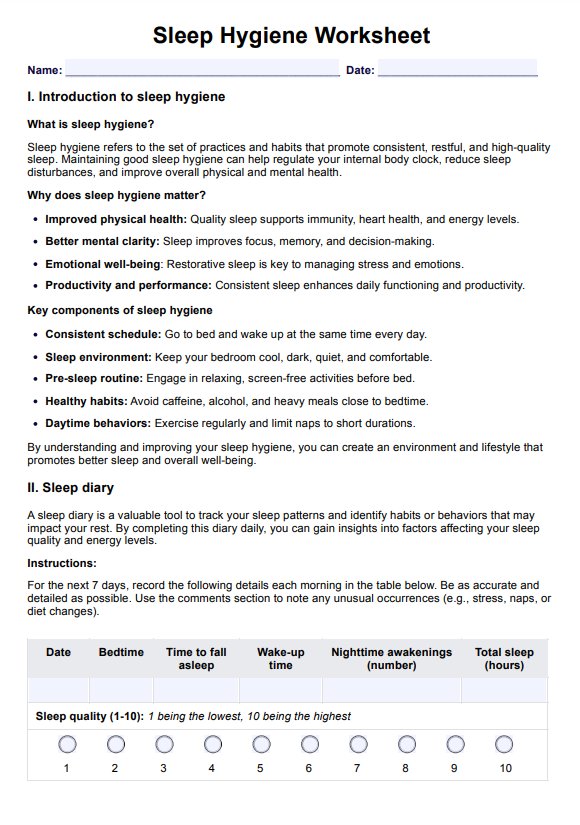A Sleep Hygiene Worksheet is a structured resource designed to help individuals improve their sleep quality by addressing habits and environmental factors that affect rest. It includes sections on creating a bedtime routine, identifying triggers like irregular circadian rhythms, and optimizing the right temperature for a good night’s sleep. By using a sleep hygiene checklist, individuals can systematically address common sleep issues and enhance their overall health and mental health.

Sleep Hygiene Worksheets
Use our comprehensive Sleep Hygiene Worksheet to empower patients to develop healthier sleep habits. Get this worksheet for free!
Sleep Hygiene Worksheets Template
Commonly asked questions
Sleep hygiene plays a critical role in managing mental health issues such as anxiety and depression. The worksheets encourage better sleep practices, such as creating a relaxing evening routine and reducing disruptions like a distant house alarm or excessive worry at night. Improved sleep helps the brain regulate emotions and reduces stress, improving overall mental health.
Yes, Sleep Hygiene Worksheets are adaptable for kids and children, helping them establish healthy sleep routines. They can guide parents and caregivers in creating consistent bedtimes, identifying activities that promote relaxation, and limiting overstimulation in the evening, such as screen time. By fostering good sleep habits early, these worksheets contribute to a child’s physical and cognitive development.
EHR and practice management software
Get started for free
*No credit card required
Free
$0/usd
Unlimited clients
Telehealth
1GB of storage
Client portal text
Automated billing and online payments











